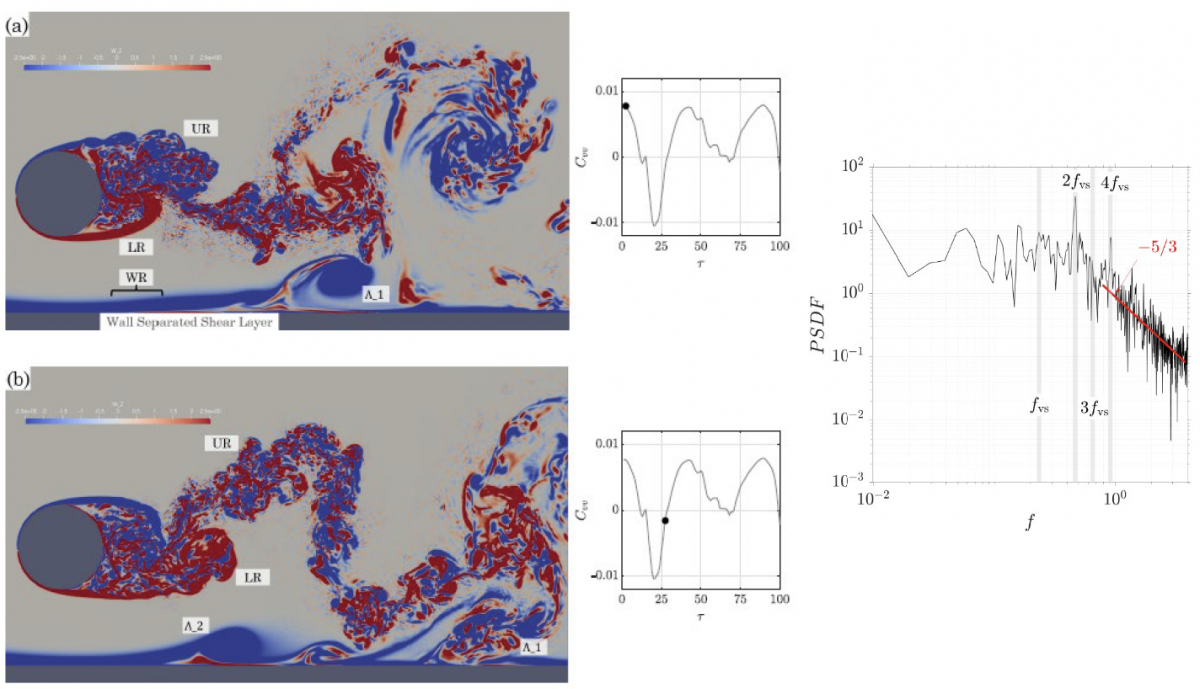Wake-induced laminar-to-turbulent bypass transition in a separated laminar boundary layer (SLB) is investigated downstream of a cylinder of diameter D mounted in a constant free stream near a smooth flat plate. Direct numerical simulation (DNS) is conducted for a moderate gap of 0.9D with _ = 3900 and _ = 150, based on the momentum thickness. The transition process is driven by coherent vortex dynamics along the wall synchronized with Kármán shedding behind the cylinder. The transition process is identified from the mean velocity and Reynolds stress fields and then characterized from the spatial evolution o the velocity field spectra. Turbulence emerges at such remarkably low _ because the transition process follows a hybrid pathway combining SLB instability with wake-driven near-wall Λ-vortex formation and their interaction with periodically shed vortices. The transition unfolds in distinct stages: linear disturbance amplification; nonlinear saturation via super-harmonic resonance; and turbulent breakdown. Unlike classical SLB transitions, the wake’s periodicity imposes unique spectral signatures on the transition dynamics. Based on weakly nonlinear theory, an approach for analyzing the nonlinear interactions and spectral energy transfer between scales is proposed. The findings characterize wake-boundary interactions inherent to turbomachinery cascades or slotted-wing aerodynamic systems, offering insights for potential flow control strategies.
SALLE B266/267
1 AVENUE CLEMENT ADER
86360 CHASSENEUIL DU POITOU

